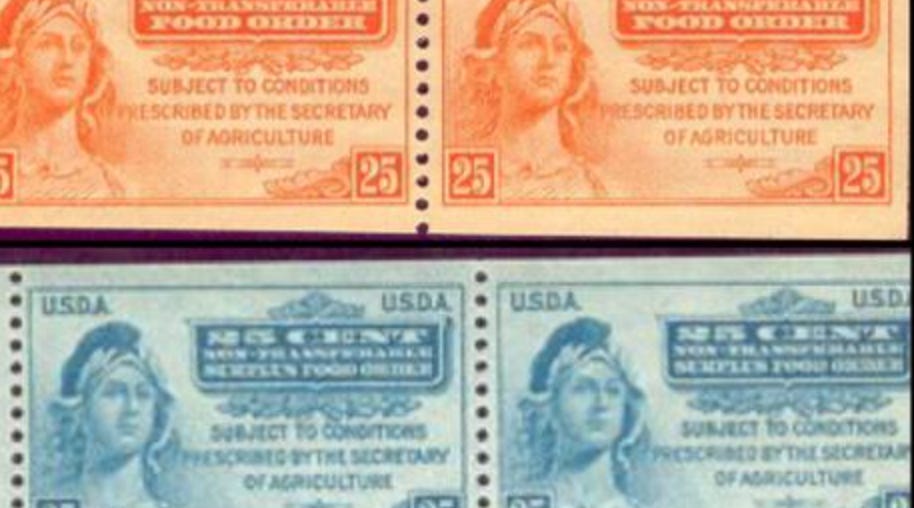At its core, Uncontemplated is a passion project. I use my personal, professional, and political experiences to advance a much larger conversation about the role policy plays in our everyday lives. Right now, Ron DeSantis is meeting the business end of that reality in Iowa. Let’s get into it.
Iowans Just Don’t Like Ron
AG Gancarski of Florida Politics just reported on a “very bleak” situation in Iowa. After gambling hard on an Iowa win, the DeSantis campaign and the massive Never Back Down political action committee (PAC) associated with his candidacy are watching poll numbers plummet right before their very eyes.
“New Iowa poll presents a ‘very bleak picture’ for Ron DeSantis”
But Why?
There are two main assumptions. Trump’s base is so loyal to him that nothing could move them. Under this framing, you’d have to believe that all the contenders are essentially vying for the number two spot in an effort to be first in line when / if something catastrophic happens to the main man. But, as the saying goes, that’s a pretty big gamble in both treasure and reputation.
The second assumption is that the more people get to know Ron, the more they dislike him. It is true, retail politics isn’t his thing. It is also true that he oscillates between whiney and petulant on camera. Still, even if he isn’t your cup of tea, he isn’t exactly unlikable. I think this unlikable narrative is a much bigger problem post-GOP primary when the independents get involved. They already think all politicians are jackasses. The narrative that Ron is just another one will be an easy sell to them. But I don’t think his likability is a factor in the Iowa primary.
Ron Isn’t Passing The Mabel Test
Mabel McFiggin of Rochester, New York, worked in a button factory until arthritis took away her ability to earn an income. Being unemployed and disabled makes it difficult to survive in any year, however, in 1939, the memories of the Great Depression were still vivid, so when the economy wobbled, the Roosevelt Administration knew it had to react quickly. By May of that year, Mabel became the first American to hand her local grocer an orange food stamp.
Consumers purchased orange stamps, which they could use to buy the food of their choice. In return, they received a blue stamp compliments of their fellow taxpayers. Blue stamps could only be used to purchase surplus food. In other words, food farmers had already grown but couldn’t sell for a fair market price. Mabel had a six-dollar purchasing power for a four-dollar investment. Four years later, when the economy - including the commodities market - improved for both consumers and farmers, the program ended.
In 1961, President Eisenhower resurrected the program and in 1964, President Johnson pushed Congress for a permanent food stamp program. Around the same time, the Reverend Martin Luther King, Jr., began talking about hunger as a matter of civil rights. Dr. Tracy Roof, historian and author of Nutrition, Welfare, or Work Support? A Political History of the Food Stamp Program explains, “many black farm hands and their families in the deep South were literally starving.” Starving black Southern farmers gave way to the Poor People’s Campaign's full involvement.
The connection to civil rights brought new attention to the issue of hunger, including the 1968 news report on school lunches, which prompted George McGovern and Bob Dole to create The United States Senate Select Committee on Nutrition and Human Needs to investigate and address hunger in America.
By 1973, Congress had passed the Agriculture and Consumer Protection Act. The law “required states to expand the program to every political jurisdiction before July 1, 1974; expanded the program to drug addicts and alcoholics in treatment and rehabilitation centers; established semi-annual allotment adjustments, SSI cash-out, and bi-monthly issuance; introduced statutory complexity in the income definition (by including in-kind payments and providing an accompanying exception); and required the Department to establish temporary eligibility standards for disasters. This legislation also added a new category of eligible purchases with SNAP benefits, seeds and plants that produce food for human consumption.”
Yes, that means President Richard Nixon the largest expansion of the program and that expansion originated out of a Committee chaired by Senator George McGovern. The benefit to the economy outweighed the partisanship of who the beneficiary was until President Reagan’s “Welfare Queen” trope and, subsequently, President Clinton’s Welfare-to-Work reform.
Where The Butter Meets The Bread.
In many ways, farmers are solid Republican voters. Except when it comes to the Farm Bill. They understand that their lives are dependent on the whims of Mother Nature and the economy in ways other professions are not. They also understand that no other profession is more critical to our national security, our economy or our citizens.
When a freshman Congressman brags to a crowd about voting down the Farm Bill (minute 24) and claims that sending payments “directly to farmers to not farm” (minute 38), farmers get it. Statements like that tell them that he doesn’t understand the importance of their blood, sweat, and tears. It tells them that he doesn’t understand the real dangers they face every season with pests, disease, and weather only to get their life’s work to market to face a volatile commodities market. It tells them he simply doesn’t understand that when there is abuse in the AG subsidies program, it’s not the family farmer wreaking the havoc.
It tells them that he doesn’t value the role they play in keeping our troops healthy, our little minds capable of learning, and our vulnerable from starving to death.
It tells them that he just doesn’t pass the Mabel Test.





